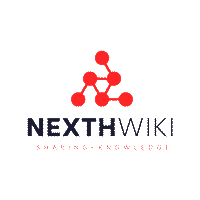Fediverse
The Fediverse
The Fediverse (a portmanteau of "federated" and "universe") is a collection of interconnected servers used for web publishing, social networking, and other online communication functions. Each server in the Fediverse operates independently but can interact with other servers using common protocols such as ActivityPub. This allows users on different servers to communicate and share content with each other, creating a decentralized and federated network.
History
The concept of the Fediverse emerged as a response to concerns about the centralization of web services and social networks in the hands of a few large corporations. Centralization can lead to issues such as censorship, lack of privacy, and control of user data by third parties. The Fediverse aims to return control to users and encourage the creation of smaller, autonomous online communities.
Common Protocols
ActivityPub
ActivityPub is a standard protocol for communication between different services in the Fediverse. It was published by the World Wide Web Consortium (W3C) in January 2018. ActivityPub allows users on one platform to send updates and receive notifications from users on other platforms, facilitating interaction across different social networks and web services.
OStatus
Before the widespread adoption of ActivityPub, OStatus was one of the most commonly used protocols in the Fediverse. Although it has been largely replaced by ActivityPub, it is still used by some platforms.
Major Platforms in the Fediverse
Mastodon
Mastodon is one of the most well-known platforms within the Fediverse. It is a decentralized social network similar to Twitter. Each instance of Mastodon is an independent server that can communicate with other instances, allowing users to follow and be followed by people on different servers.
PeerTube
PeerTube is a decentralized video hosting platform that uses the ActivityPub protocol. It allows users to create and share videos across different servers, promoting diversity and resistance to censorship.
Pixelfed
Pixelfed is a social media platform focused on image sharing, similar to Instagram. Like other platforms in the Fediverse, Pixelfed is decentralized and federated, enabling users on different servers to interact and share content.
Advantages of the Fediverse
Decentralization
The main advantage of the Fediverse is its decentralized nature. Instead of relying on a single server controlled by one company, users can choose from multiple independently operated servers. This reduces the risk of censorship and increases resistance to shutdowns.
User Control
Users have more control over their data and online interactions in the Fediverse. They can choose servers that align with their values and community standards. If they are unhappy with one server, they can migrate to another without losing their connections and content.
Privacy
The Fediverse promotes better privacy practices. Since there is no central authority collecting and monetizing user data, individuals have greater control over their personal information.
Customization
Each server in the Fediverse can be customized to cater to specific communities and interests. This leads to a diverse ecosystem where niche communities can thrive without being subject to the rules and algorithms of a single platform.
Challenges and Considerations
Fragmentation
The decentralized nature of the Fediverse can lead to fragmentation. Different servers may have varying policies, moderation standards, and technical capabilities, which can create inconsistencies in user experience.
Scalability
Managing a decentralized network can be challenging in terms of scalability. Smaller servers may struggle with resources and technical support, affecting performance and reliability.
Security
While decentralization offers privacy benefits, it can also pose security challenges. Ensuring the security of user data across multiple independent servers requires robust practices and coordination.
Conclusion
The Fediverse represents a significant shift from centralized social networks to a decentralized, federated model. It offers numerous benefits, including increased user control, privacy, and customization. However, it also presents challenges that need to be addressed to ensure a seamless and secure user experience. As the Fediverse continues to grow and evolve, it holds the potential to reshape the landscape of online communication and social networking.
